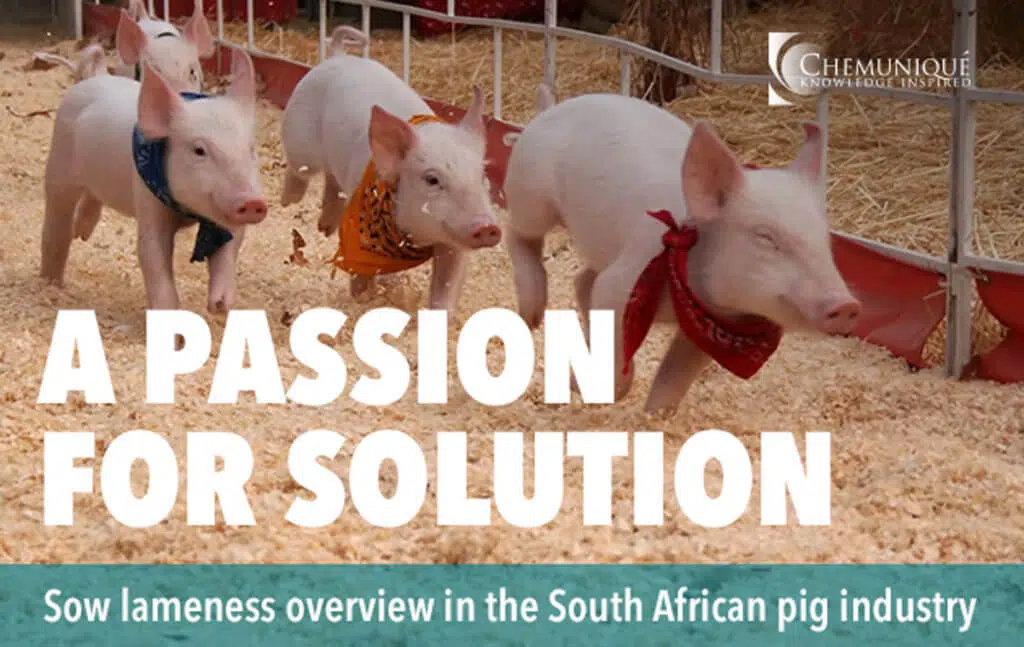The South African pig industry is no different from other pig industries in the world with regard to sow lameness. More than 76% of the sows assessed for lesion scoring had a lesion in more than one claw, which in turn can lead to high prevalence of lameness, depending on the severity of the lesions. Of the 701 sows assessed at the different abattoirs, sows within score 1 were 51% and with increasing severity lesion i.e. score 2 and 3 26% of the sows were within this range.
“Sow health: Lameness is not just a cow issue – the swine industry has placed less emphasis on lameness and has conducted less research into the management and prevention of lameness in sows. It is likely that the effect of lameness in the reproductive swine herd has been underestimated” (Nutrition & Health: Swine).
It is estimated that sow lameness prevalence typically ranges from 6% on excellent farms up to 25 to 30% in problem herds. As a result, lameness causes millions of rand in losses to pig producers through lost productivity. Lameness prevention is particularly important for young sows, as they will be the most productive animals in the herd if lameness can be prevented.
The diagram illustrate the interaction and complexity of lameness and factors contributing to sow lameness, and the major lameness factors. therefore in deal-ing with sow lameness, one has to take more than of the above factors into consideration, as lameness is a multi-factorial problem within the swine industry.
Figure 1, it clearly indicates that with sows assessed for lesion scoring in South African abattoirs, 76% of the sows had lesions and most of the sows assessed on the claws/hooves had more than 90% lesions with the individual parameters measured. In other studies in different countries, more than 90% of all sows had a lesion in the wall and heel and about 50 – 75% of the sows had overgrown heels, lesions in the white line, heel/sole junction and sole. Heel lesions and overgrown heels were more prevalent in rear feet.
The lesions of greatest concern are those that penetrate the horn wall into the corium of the foot and cause an inflammatory response, such as sidewall cracks of the outer horn wall or white line lesions. Inflammation is often accompanied by pain and is one of the most apparent consequences of lameness. Many times lame sows are thin and have poor body condition. Sows with chronic lameness frequently have decreased feed intake, which tends to impact on reproductive performance. Inflammation also causes changes within the body, disrupting how nutrients are utilised and even impacting on ovulation. Lameness can be caused by nutritional problems, management and environ-mental and genetic factors. Flooring type and housing (crates vs. groups) make a difference.
Mashilo Phosa is the Swine team lead at Chemuniqué










